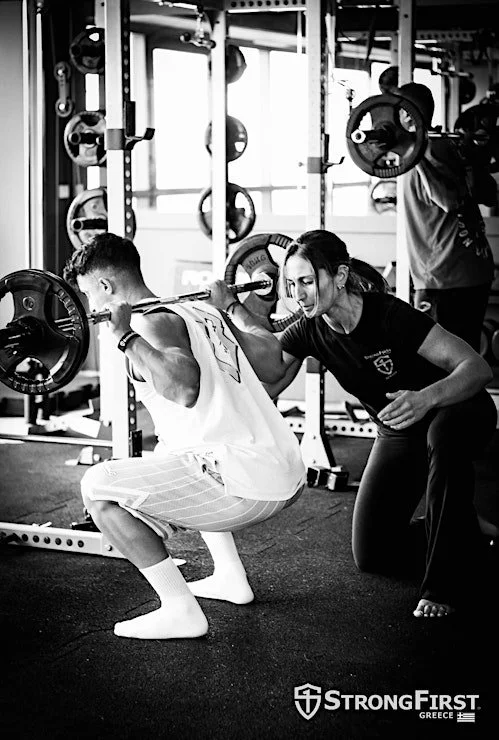Know Your Baseline: Train With Clarity, Grow With Confidence
Welcome back to Saturday Steel, where we explore strength, mobility, and the mindset behind sustainable training. This month, we’re diving into a concept that quietly determines whether your training feels aligned—or frustrating: your baseline.
A baseline is your current reality. It’s not a judgment, it’s a compass. It’s how we measure where we are today so we can make sure our training matches our capacity—and ultimately leads us toward our goals without unnecessary burnout or injury. Knowing your baseline is how you train with clarity.
Why Baselines Matter
You can’t grow what you don’t track. And you can’t build a solid plan if the foundation is foggy.
Baselines allow you to:
✅ Anchor your goals to your reality
✅ Build training around your needs (not someone else’s Instagram routine)
✅ Reduce overwhelm by clarifying your next steps
✅ Feel confident in your progress—because it’s measurable
Whether you’re a new parent easing back into movement, or an athlete pushing for performance, checking in with your baseline is a form of self-respect.
Strength Baselines: The OMP Belt System
At OMP, we’ve created a belt-rank system inspired by Brazilian Jiu-Jitsu. Each “belt” represents a standard of strength—measured not just by what you lift, but how well you lift it.
🟦 Blue Belt – Solid Foundation
2KB Deadlift: 5 reps with excellent technique – 2 x 24KG
1-Arm Swing: 5 reps/side with control – Women: 20KG / Men: 24KG
🟪 Purple Belt – Progressing Power
2KB Deadlift: 2 x 32KG
1-Arm Swing: Women: 24KG / Men: 32KG
🟫 Brown Belt – Advanced Strength
2KB Deadlift: 2 x 40KG
1-Arm Swing: Women: 28KG / Men: 40KG
⬛ Black Belt – Elite Mastery
2KB Deadlift: 2 x 48KG
1-Arm Swing: Women: 32KG / Men: 48KG
These ranks help you identify where you are and what might be next. It’s a progression, not a competition.
Mobility Baselines: Your "Oh Sh*t" Line
Mobility isn’t about being bendy—it’s about being ready. Your “oh sh*t” line is that moment where your body can't do what you’re asking of it when it matters most: catching yourself in a fall, lifting groceries, reacting to the unexpected, playing with your kids.
Ask yourself:
Do I avoid certain movements or positions because of pain?
Do I wake up stiff and stay that way?
Are there basic physical tasks that feel more daunting than they should?
Chronic shoulder tightness, low back irritation, hip stiffness, joint instability that makes things feel riskier than they should? These are all signs your mobility baseline is talking to you and that there’s work to be done!
Beyond Strength & Mobility: Other Baselines to Track
There’s more to being strong than the numbers on a kettlebell:
💭 Mental clarity & mood – Are you consistently foggy or scattered?
⚡ Energy levels – Are you wiped out after workouts—or feeling recharged?
🌀 Recovery & stress – Are you sleeping well? Do you bounce back between sessions?
📅 Training frequency – Are you showing up 1x/week or 3-4x? What’s realistic for you right now?
Tracking these helps you course-correct early, instead of waiting until you’re in burnout or injury mode.
Nutrition Baselines: How to Know What’s Going Well vs. What Needs Adjustment
Nutrition plays a massive role in how we feel, recover, and perform—but it’s often the most overlooked baseline.
Ask yourself:
Am I getting enough protein to support my strength and health goals?
Am I deficient in any vitamins or minerals?
Is there something I’m eating that’s causing discomfort in my gut?
Am I drinking enough water?
A simple food journal or a blood panel can be powerful tools to verify what’s supporting your progress—and what may need adjusting. Just like with training, knowing your starting point leads to smarter, more effective choices.
Take Action: Check Your Baseline
We created a simple worksheet to help you assess your current strength, mobility, and recovery markers.
Use it to:
Reflect honestly (not critically) on where you are
Spot patterns or pain points
Plan your next best step with your coach
Final Thoughts: Ground First, Then Grow
At OMP, we believe the strongest athletes are the ones who are honest with themselves. When you train from your true baseline, progress becomes more joyful, sustainable, and clear.
Meet yourself where you are—and move forward from there.
With strength,
- Luis & Mel
Co-Owners, Oakland’s Most Powerful













Stay consistent through the holidays with a simple, sustainable strength plan. We show how often to train (2–3x/week), minimalist bodyweight swaps when traveling, and easy habits for sleep, hydration, and recovery—so your gains stick without stress. Practical holiday fitness tips from Oakland’s Most Powerful Gym.